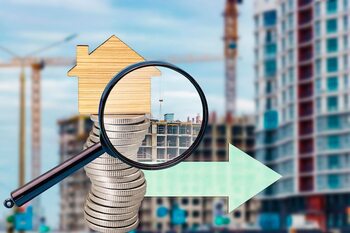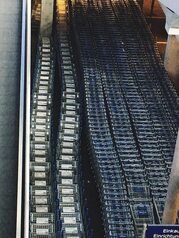The appeal of authenticity in real estate value

The appeal of authenticity in real estate value lies in the growing preference for spaces that reflect local identity and culture, both in rural and urban areas. In a world where the original has become a status symbol, understanding how these characteristics impact appreciation is essential for any investor. This article will explore the differences between rural and urban real estate markets, highlighting how authenticity can elevate a property's value, making it an investment that is not only financial but also emotional.
1. Definition of authenticity in the real estate context
Authenticity in the real estate context refers to a property's ability to reflect its history, culture, and unique characteristics that distinguish it from others. This can include traditional architectural elements, local materials, and decorative details that tell a narrative about the region where it is located. In a market where uniformity often prevails, authentic properties become a refuge for those seeking more than just a simple investment; they are spaces that evoke emotions and deep connections with the place. This uniqueness not only attracts buyers interested in living genuine experiences but can also significantly influence the resale value of the property.
Additionally, authenticity is manifested in how a property integrates with its environment. A home or building that respects and complements its local landscape not only gains aesthetic appeal but also reinforces its intrinsic value. Authentic properties are often located in vibrant communities where residents value their cultural heritage and the diversity of the surroundings. This creates a sense of belonging and community that can be highly desirable for potential buyers and tenants. Therefore, understanding the nuances of authenticity within the real estate sector is crucial for those looking to maximize their investments while contributing to the cultural and social enrichment of the area.
2. The emotional connection with authentic properties
The emotional connection with authentic properties goes beyond financial aspects; it is about creating a home that resonates with the personal and cultural identity of its inhabitants. Properties that showcase unique characteristics, such as traditional architecture, local materials, or historical elements, offer a narrative that invites owners and their families to be part of something greater. This emotional connection not only enhances quality of life but also establishes a sense of belonging in the community, which is invaluable for those looking to put down lasting roots.
Moreover, the appeal of authentic properties extends to their ability to attract buyers and tenants who value uniqueness over uniformity. In a market saturated with standardized constructions and generic designs, homes that possess history and personality often stand out and generate greater interest. This phenomenon not only elevates the perceived value of the property but also contributes to the sustainable development of local communities by encouraging architectural practices that respect the cultural environment. In this sense, investing in an authentic property can lead to significant emotional benefits and strong long-term capital appreciation.
3. Comparison: Rural market vs urban
In the urban market, authenticity manifests through the preservation of historic buildings, neighborhoods with distinctive character, and a rich cultural offering that includes art galleries, theaters, and local restaurants. These elements not only attract residents seeking a sense of belonging and connection to their environment but also elevate real estate value by creating demand for properties that offer unique experiences. The cultural diversity and social vitality of cities make authentic spaces highly desirable, resulting in a constant increase in property prices in these areas. However, this appreciation may be subject to fluctuations depending on economic factors and urban trends. On the other hand, the rural market presents its own form of authenticity, where the connection to nature, local traditions, and regional architectural styles play a fundamental role. Rural properties often offer large plots of land and a quieter lifestyle, which has become attractive for those looking to escape urban hustle and bustle. This type of authenticity translates into significant emotional value for those seeking to reconnect with their roots or enjoy more natural spaces. Although the growth of the rural market may be slower compared to the urban one, the increasing search for alternative ways of living has begun to drive up prices in these areas. Thus, both rural and urban markets have their own unique attractions that can drastically influence real estate value according to contemporary buyer preferences.
4. How history influences property values
The history of a property is not only found in its architecture but also in the stories and events that have taken place in its surroundings. Properties located in areas with a rich cultural or historical heritage tend to attract the interest of buyers looking for more than just a living space; they seek a connection to the past. The narrative behind an old house, for example, can bring significant emotional value and often translates into a price increase in the market. Thus, investors must consider how the history of a property can not only differentiate it from other available options but also make it more desirable for those who value authenticity.
Moreover, the association of a property with significant historical events or recognized figures can drastically influence its perception and valuation. Properties that have witnessed key moments in local history often enjoy a special status among buyers and tenants. This historical connection becomes a valuable asset, as people are willing to pay more to live in places rich in cultural and historical significance. Therefore, understanding how these historical elements affect real estate valuation is crucial for any investor looking to maximize the financial and emotional potential of their acquisitions.
5. The role of the natural environment in rural attractiveness
The natural environment plays a fundamental role in rural appeal, as the scenic beauty and biodiversity of a region can significantly increase property values. Green spaces, mountains, rivers, and picturesque landscapes not only offer a healthier and more relaxed lifestyle but also foster a sense of community and connection with nature. Buyers are increasingly seeking residences that allow them to enjoy outdoor activities and appreciate the surroundings, making these natural features an important differentiating factor in the real estate market.
Additionally, the natural environment helps create an authentic experience that attracts those who value sustainability and quality of life over the fast pace of cities. Properties located near natural spaces often provide opportunities for ecotourism or recreational activities, which can enhance their appeal for both permanent buyers and those interested in vacation investments. The integration of the local landscape into the architecture and design of the homes also reinforces this authenticity, creating an emotional connection to the place and making potential owners feel more connected to their home.
6. Architectural styles that stand out for their authenticity
Architectural styles that stand out for their authenticity are a reflection of the history and culture of a place, making them key pieces within the real estate market. Properties with unique architectural characteristics, such as colonial houses in Latin America or wooden cabins in Scandinavian regions, not only attract buyers interested in a distinctive home but also those seeking a lifestyle that values tradition and heritage. This type of authenticity translates into added value, as these buildings are often perceived as more desirable and exclusive, thereby increasing their market value.
Additionally, authentic architectural styles promote an emotional connection with the environment. For example, buildings inspired by local vernacular architecture are not only visually appealing but also evoke a sense of belonging and community pride. This connection can be especially strong in rural areas where architecture tells stories about past generations. When buyers feel an emotional affinity towards a property due to its authentic design, they are likely to be willing to invest more, recognizing not only the financial value of the property but also its cultural significance. In this way, authentic architectural styles establish themselves as essential elements to enhance the appeal and value of a real estate investment.
7. The importance of local traditions in added value
Local traditions play a fundamental role in the added value of properties, as they provide a sense of identity and emotional connection to the place. When a property is located in a community that celebrates its customs, festivals, and local cuisine, it becomes an attraction not only for residents but also for tourists and potential buyers. This authenticity translates into unique experiences that can be hard to find in more homogeneous or urban environments, which in turn can significantly elevate real estate value. Houses and apartments located near artisan markets, cultural fairs, or historical sites tend to have higher demand due to the promise of a lifestyle enriched by these traditions.
Additionally, local traditions foster a sense of belonging among residents, contributing to the social and economic stability of the area. A neighborhood where people actively engage in the preservation of their culture tends to be more cohesive and safe, characteristics highly valued by those looking to invest in real estate. Supporting local businesses also creates a positive cycle that reinforces the community economy; this not only benefits current owners by maintaining or increasing the value of their properties, but also attracts new investors interested in capitalizing on the economic potential derived from those living traditions. In summary, recognizing the importance of local traditions is key to maximizing property value and ensuring that each real estate investment is both profitable and meaningful from a cultural perspective.
8. Strategies for valuing authentic properties
To assess authentic properties, it is essential to consider the cultural and historical context of the location. Properties that retain original architectural elements or have been restored using local materials often appeal to buyers interested in the history and character of the place. Researching the traditions, legends, and unique features of the area can provide a solid foundation for establishing value. Conducting comparative studies with similar properties in areas that share cultural attributes can help determine a more accurate price, thus reflecting their authenticity and appeal.
Another key strategy is to engage real estate experts specialized in historical or unique properties. These professionals can provide an accurate valuation considering factors such as the quality of the materials used, the state of preservation, as well as the demand for this type of real estate. Additionally, highlighting aspects such as sustainability certifications or energy efficiency can add a significant boost to the final value. The combination of these elements not only enhances the monetary price of the property but also strengthens its emotional connection with potential buyers looking for more than just a simple financial investment.
9. Success stories: Smart investments in rural and urban areas
Success stories in real estate investments reflect how authenticity can translate into profitability, both in rural and urban areas. In rural areas, we have seen projects that have revitalized communities by restoring historic homes and promoting local tourism. For example, an old farmhouse converted into tourist accommodation not only preserves traditional architecture but also attracts visitors seeking authentic experiences. These types of initiatives not only benefit the owner through a steady income stream but also contribute to the economic development of the surrounding area, thereby increasing the value of other nearby properties.
On the other hand, in urban environments, the phenomenon of "creative cities" has shown that authenticity can be a driver for real estate value appreciation. Projects that integrate local art and community spaces have transformed forgotten neighborhoods into desirable destinations for living and working. A notable case is the revival of old industrial buildings converted into lofts and studios, where residents value not only the unique aesthetics of their homes but also their connection to the history of the place. These smart investments highlight how respect for cultural identity can lead to significant economic benefits, offering investors a double reward: a valuable property and an enriched cultural legacy.
10. Future trends: Where is the real estate market headed?
The real estate market is in constant evolution, and future trends point to a greater integration of authenticity in the design and development of properties. The demand for spaces that tell unique stories and are deeply rooted in their cultural context will continue to grow. Modern buyers seek not only a place to live but also an experience that resonates with their personal values and lifestyle. This means that developers will have the responsibility to create environments that celebrate cultural diversity and promote sustainability, integrating traditional elements with contemporary innovations to attract a broader audience.
Additionally, digitalization will continue to transform the real estate market, allowing buyers to explore properties from anywhere in the world before making an investment. Virtual platforms will facilitate access to authentic and unique homes by offering immersive digital tours that highlight the distinctive features of each property. This approach not only broadens the market reach but also fosters an appreciation for the exclusive and authentic, thereby reinforcing the emotional value associated with these investments. As consumers become more aware of their social and environmental impact, properties that embody these ideals will be better positioned to thrive in a future where authenticity will be synonymous with appeal and lasting value.



